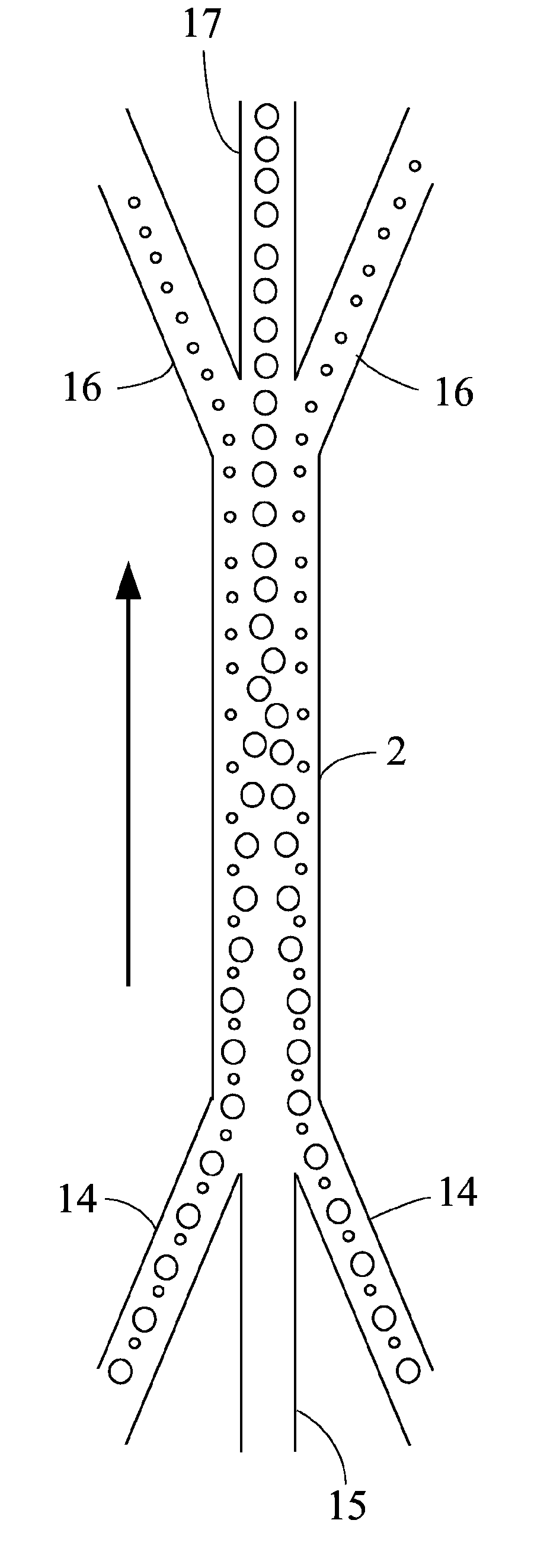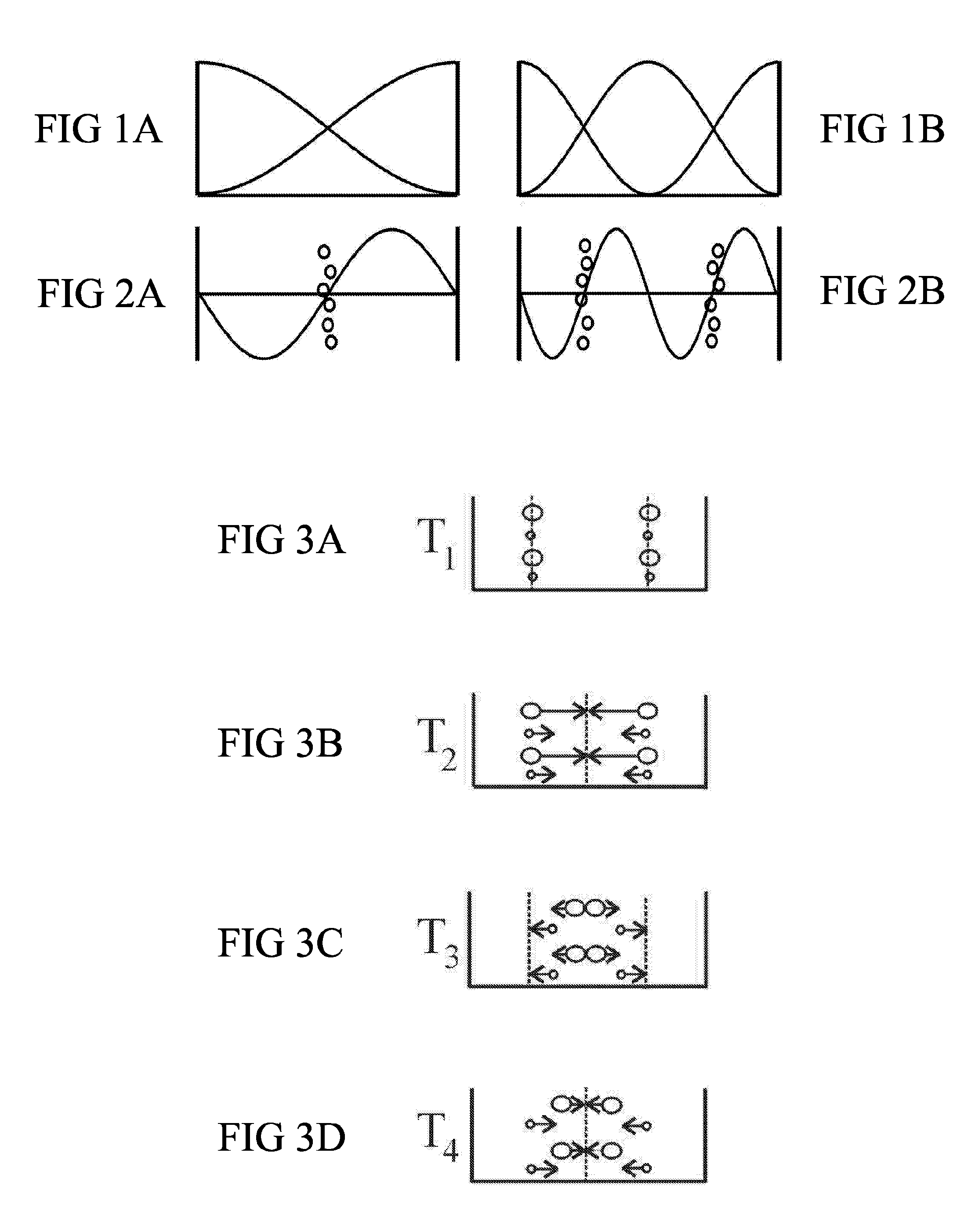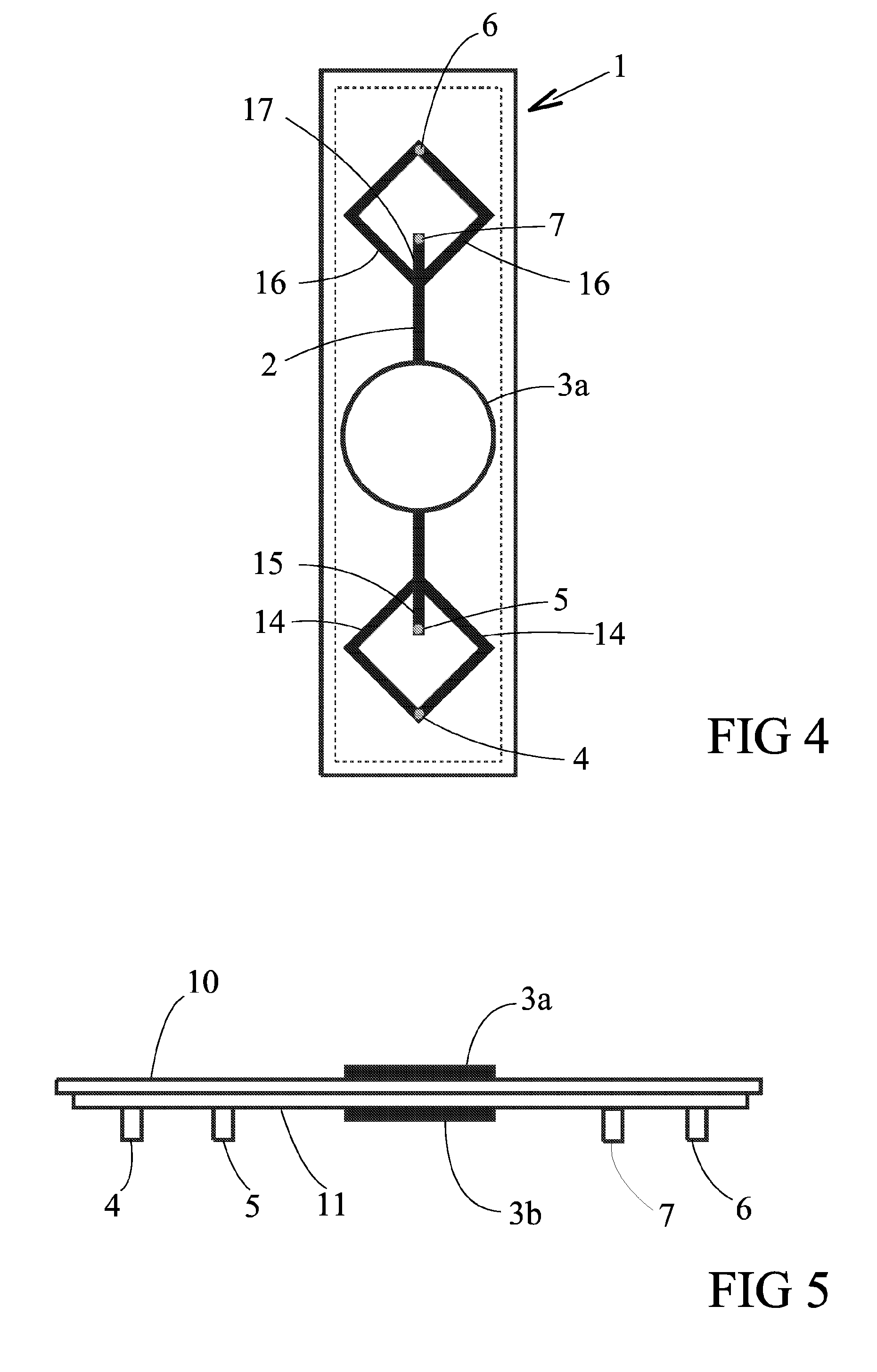Method and Device for Separating Particles
a particle and separation technology, applied in the field of methods and devices for separating particles, can solve the problem of not being able to separate particles that were exposed to forces acting in the same direction
- Summary
- Abstract
- Description
- Claims
- Application Information
AI Technical Summary
Problems solved by technology
Method used
Image
Examples
example
[0040]A separation channel (385 μm wide and 250 μm deep) was etched into a silicon wafer using anisotropic wet etching. The channel was sealed with a glass lid by anodic bonding and silicone tubes were glued to the inlets and outlets on the backside. The ultrasonic excitation (2 Mhz and 4 Mhz) was accomplished by attaching two piezoceramic crystals, one from the back side and one from the front side, with ultrasonic gel. The flow was controlled using three syringe pumps, 26 μl / min at the water inlet, 15 μl / min at the centre outlet and 75 μl / min at the side outlets. The balancing flow, 64 μl / min of particle solution, was self-drawn from an open cup. The particle solution consisted of a mix of 3 μm polystyrene beads, with a density of 1.05 g / cm3, and 8 μm polymethylmethacrylate beads, with a density of 1.19 g / cm3, suspended in H20. In order to get proper separation, the switching parameters had to be tuned correctly. This was done by systematically adjusting the parameters until suff...
PUM
| Property | Measurement | Unit |
|---|---|---|
| Time | aaaaa | aaaaa |
| Length | aaaaa | aaaaa |
| Length | aaaaa | aaaaa |
Abstract
Description
Claims
Application Information
 Login to View More
Login to View More - R&D
- Intellectual Property
- Life Sciences
- Materials
- Tech Scout
- Unparalleled Data Quality
- Higher Quality Content
- 60% Fewer Hallucinations
Browse by: Latest US Patents, China's latest patents, Technical Efficacy Thesaurus, Application Domain, Technology Topic, Popular Technical Reports.
© 2025 PatSnap. All rights reserved.Legal|Privacy policy|Modern Slavery Act Transparency Statement|Sitemap|About US| Contact US: help@patsnap.com



